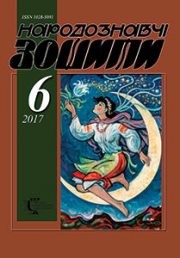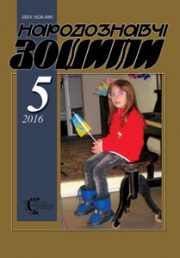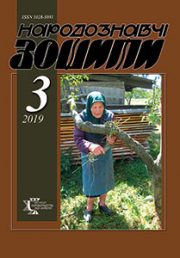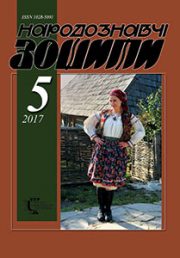The Ethnology Notebooks. 2021. № 6 (162), 1435—1440
UDK [791.046:316.37]”19/20″
DOI https://doi.org/10.15407/nz2021.06.1435
THE IMAGE OF THE ENEMY IN THE SOVIET CINEMATOGRAPH AND (POST) SOVIET IDENTITY
TKHORZHEVSKA Tatyana
- ORCID ID: https://orcid.org/0000-0002-4696-4636
- Ph. D. in History, Associate Professor
- of the Department of New Media and Media Management
- of I.I. Mechnikov ONU
- Contacts: e-mail: tvtchor@gmail.com
Abstract. The article is devoted to the construction of identity. Identity is mythological because the myth organizes the world and determines this world. Myths collective (including government) are created deliberately by elites. The newly created mythology, which is the basis of identity should correlate with the collective memory of society. Soviet cinema was one of the tools of creation of the Soviet myth. The question is how its subjects correlated with the collective memory. The method of creating an «enemy» is considered in the article on the example of three Soviet films
In the film «Ivanna», Metropolitan Andrey Sheptytsky and Ukrainian nationalists act as «enemies». To achieve this, Ukrainian nationalists are portrayed as Nazi collaborators and murderers.
Another film, «Clouds over Borsk», depicts the enemies of the Protestant (Pentecostal) believers. To achieve this effect, the plot of the film represents the presence of human sacrifice in the practices of a religious community.
The film «Ogareva, 6» is dedicated to those who steal from the state. We are talking about the director of one of the Soviet factories. He set up illegal production at his factory and made a lot of profit. In a planned economy, this was a crime. In order to enhance the image of the enemy, the filmmakers make a murderer out of the thieving director.
Тhe products of the Soviet film industry created images, superimposing on images that already existed in the collective consciousness.
Soviet mythology existed decades after the disappearance of the USSR. Today’s post-Soviet man may have no idea of the doctrine of Marxism and its Soviet interpretation, he may not know the «heroes». However, images of enemies remain known and are used in one way or another to construct one’s own identity.
Keywords: identity, mythology, collective memories of Soviet cinema.
Received 7.09.2021
REFERENCES
- Bruibeker, R., & Kuper, F. (2002). Beyond identity. Ab imperio (Pp. 131—140). Retrieved from: http://abimperio.net/books/Myths_and_Misconceptions.pdf [in Russian].
- Dzhadt, T. (2010, serpen). People at the border. Krytyka. Retrieved from: http://krytyka.com/ua [in Russian].
- Schopflin, George, & Geoffrey, A. (Ed.). (1997). «The Functions of Myth and a Taxonomy of Myths». Myths and Nationhood (Pp. 19—36).
- Liuis, K. The funeral of the great myth. Retrieved from: http://azbyka.ru/poxorony-velikogo-mifa [in Russian].
- Cherniavskaia, I.U. (2008). Identity Against the Background of Myth. Anthropological Forum, 8, 198—226 [in Russian].
- Kolakovskyi, L. (2005). My correct views on everything. Kyiv: Kyievo-Mohylianska akademiia [in Ukrainian].
- Hrytsak, Ya. Historians and time. UKU. Retrieved from: http://ucu.edu.ua/library/9077/ [in Ukrainian].
- Edelman, O. (1999). Legends and myths of the Soviet Union. Logos. Retrieved from: http://www.ruthenia.ru/logos/number/1999_05/1999_5_15.htm [in Russian].
- Fedevych, K. (2009). Bandera through the eyes of ordinary Russians. Zaxid.net Retrieved from: http://zaxid.net/news/showVideos.do [in Russian].
- Kis, R. (2021). National — Global — Local. Social anthropology of cultural space. Lviv: Kolo [in Ukrainian].
- Tkhorzhevska, T. (2011). Stereotypical ideas of the Orthodox about the «stunt». History of religions in Ukraine. Scientific yearbook (Book I, pp. 72—78). Lviv [in Ukrainian].
- Lvov, A., Russele, K., & Agadzhaniana. A. (Eds.). (2006). Blood and matzo: texts, practices, meanings. Religious Practices in Contemporary Russia: Collection of Articles [in Russian].







